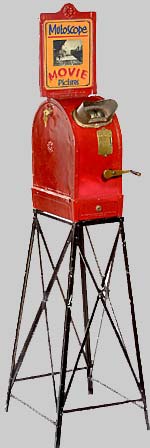Zoetrope:
A zoetrope is a series of images on a drum and if you spin it really fast then you can see the images that are drawn on the come together into one. But you have to have at least 12 images in the wheel otherwise it wont work. The way you see the image is through the little slits. This was invented in 100 BC by the guy named Ding Huan.
Thaumatrope:
A Thaumatrope is another piece of animated history it was made in 1825 by a man named John Aryrton Paris, who was a English Physician. It was a victorian toy, which is made by putting two pictures on each side of a piece of paper. You then twist the piece of string that is wedged between the piece of paper. The paper should then spin around making the two pictures come together into one.
Phenakistoscope:
The Phenakistoscope is another early form of animation. It is a circle that has drawings all around. You then put the circle into a machine the spins the circle around. The machine also has a slit that you can look through and just like of a Zeotrope you can see the picture move.
Kinetscope:
Kinetscope:
A Kinetscope was another early form of animation. It is a machine that has a peephole at the top. People used to put a penny in the machine and they were about to see images. Most of the time these machines would have dirty images in them like half nude women in them.
Mutoscope:
The Mutoscope was another early day form of animation. It is a sort of flip book. That means the pictures sort of flip up and show you what's on the piece of paper. There are lots of these pieces of paper and if it goes fast then the photos sort of emerge together to make one moving image. The typical Mutoscope will have 850 cards inside it. The cards are all placed in a circle so it goes around quiet fast to get the best movement.


No comments:
Post a Comment